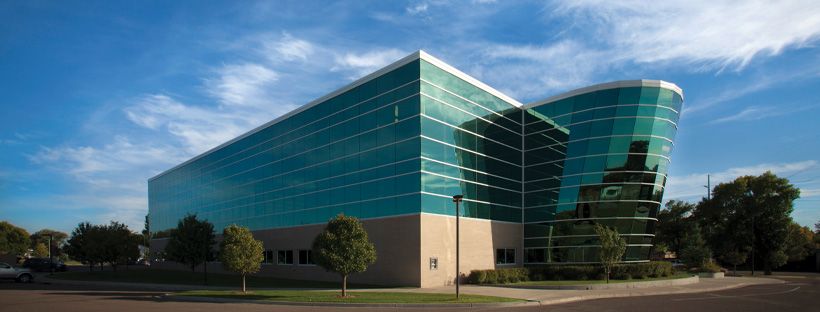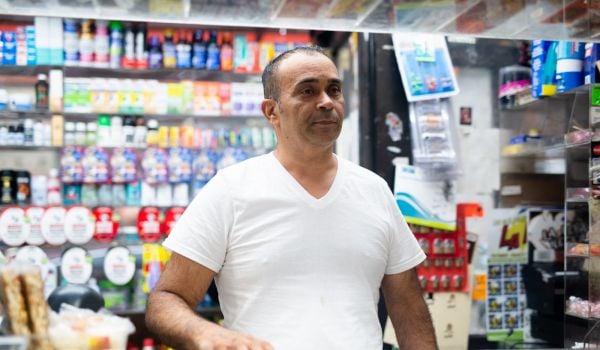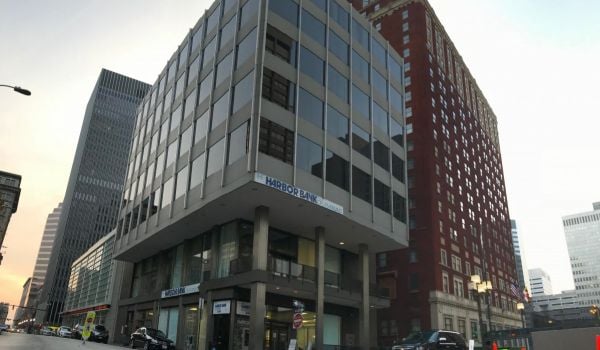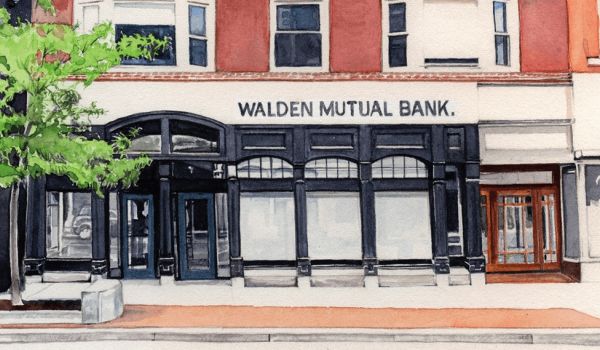Despite the worst of what you might have heard about banks over these past two weeks, when banks do fail it’s become rare that any depositors lose any money, even if they have a substantial amount of uninsured deposits.
There are around 5,000 FDIC-insured banks. None failed last year, none in 2021. Only eight have failed since 2018. Even the pandemic didn’t cause a sudden spike in bank failures. The interest rate risk that led to Silicon Valley Bank’s demise is not nearly as huge a potential drag at most other banks — and it’s not that hard to find any bank’s balance sheet and check for yourself, as I showed recently.
More to the point, out of 563 bank failures since 2001, in 522 of those instances the FDIC simply moved all or nearly all of those deposit accounts to another bank — including uninsured deposits. That now includes both the failures of the past two weeks: New York Community Bank assumed the deposits of the failed Signature Bank, and as of Monday, North Carolina-based First Citizens Bank assumed the deposits — insured and uninsured — of the former Silicon Valley Bank.
Now, more and more voices are now calling for the FDIC to lift the cap temporarily or permanently, or even eliminate the $250,000 cap on deposit insurance to officially insure all deposits — as opposed to the more ambiguous situation today in which FDIC appears to have the power to decide arbitrarily when it wants to protect uninsured deposits.
But perhaps more importantly, eliminating the FDIC deposit insurance cap could clear the path for a big boost for local community banks and regional banks — specifically, a boost from state and local government deposits.
State and local governments currently have $722 billion deposited in private commercial banks. About a third of those deposits — around $250 billion — are in community banks, according to a Next City analysis of FDIC data. The one exception is in North Dakota, where the state government’s $8.3 billion in deposits are all held at the state-owned Bank of North Dakota.
Those dollars come from state and local taxpayers, and they’ll eventually go out again to pay for essential services including infrastructure, public education and other public goods, but the local impact of those dollars while they are deposited at a community bank is not very significant. You might expect to find that large deposit accounts allow local banks to invest more in local real estate, local businesses or crucial community development projects. But that’s not the case with almost all state or local government deposits.
Since most state or local governments expect to hold more than the federally-insured cap of $250,000 in their accounts at any moment in time, most states require any bank holding deposits from government units to collateralize them dollar-for-dollar with certain low-risk or easily sellable assets. In other words, for $1 million a local or state government might deposit at a bank, instead of loaning out most of that amount, the bank has to purchase $750,000 in investments like U.S. Treasuries or mortgage-backed securities sold by Fannie Mae, Freddie Mac or Ginnie Mae.
That collateralization requirement is a big reason why many community banks shy away from banking state or local governments. It’s also a big limitation on programs like New York State’s Banking Development Districts program, in which banks specifically apply to hold a small portion of local or state government deposits at branches located in designated under-banked communities. But those deposits still have to be collateralized, usually with U.S. Treasury bonds or mortgage-backed securities, so the deposits still can’t usually be leveraged to support loans in those communities.
But in light of discussions about lifting or eliminating the FDIC deposit insurance cap, it’s worth noting that state laws are typically written to say only state and local government deposits in excess of FDIC-insured deposits must be collateralized. It would take an act of Congress to eliminate the FDIC deposit insurance cap permanently, but if it did or if it significantly raised that cap, more community banks could suddenly be more interested in holding more state or local government deposits — and all of them would finally be able to leverage those deposits to make more loans in their regions and communities.
How would eliminating the cap work?
While the reality is that depositors rarely lose any money, there’s a lingering concern that the Biden administration might only be interested in protecting uninsured deposits at banks that are “too big to fail” – as it previously indicated after Silicon Valley Bank’s collapse, before backtracking in a later message that indicated support for local and regional banks.
There are some signs that depositors might be fleeing to the largest banks for the perception of greater security. According to Federal Reserve data, released every Friday, in the week after Silicon Valley Bank and Signature Bank failed, small banks saw $120 billion in deposit outflows — but that’s just 2% of the deposits they held. It’s likely right now that large depositors at larger regional banks are moving uninsured deposits to one of the top four or five banks. In New York, some community banks have told Next City they’re actually gaining new depositors after the failure of the relatively much larger Signature Bank of New York.
So far, “most banks tell us that their customers are not panicking and have not experienced any material deposit outflows,” says Fred Cummings, whose firm Elizabeth Park Capital Management manages a $300 million portfolio of investments in local and regional banks. “We are experiencing a crisis of confidence. The fundamentals are better than perceived.”
More will be revealed in this coming Friday’s weekly data release from the Federal Reserve. Either way, raising or eliminating the FDIC deposit insurance cap would reduce anxiety and incentive to move deposits into much larger “too big to fail” banks.
One of the big criticisms of adjusting that cap has always been that it would create “moral hazard,” encouraging banks to take even more exorbitant risks knowing the government has their back — but some banking experts say Silicon Valley Bank and Signature Bank proved that argument is now obsolete.
Raising or eliminating the cap would also require raising the insurance premiums that all banks pay the FDIC to provide deposit insurance. The FDIC charges banks a premium per dollar of insured deposits, and the premium rate per dollar is higher for banks that the FDIC rates as riskier or “highly complex.” The deposit insurance rate schedule and how the FDIC defines risk have already been ongoing battles between the agency and the banking industry. The FDIC just voted last year to raise deposit insurance premiums, a move that banks of all sizes loudly opposed.
Higher FDIC deposit insurance premiums could be passed along to clients via slightly higher fees or interest charged on loans, or slightly lower interest rates paid on deposits. But since those costs would be spread across all bank clients, it’s not totally clear at this point how much anyone would notice. The cost of 100% insured deposits could end up being just a few extra pennies a year for a bank’s smallest clients. The FDIC could also structure the pricing to minimize the impact of the cost on banks whose depositors today mostly fall below the current $250,000 cap, while maximizing the burden on those banks who have more depositors above that threshold.
The creation of federal deposit insurance helped transform the banking system. Bank runs and bank panics occurred with regularity for the first 150 or so years of U.S. history. That changed dramatically with the creation of the FDIC and federal deposit insurance, which first went into effect on January 1, 1934.
At the time, federal deposit insurance only covered up to $2,500 per depositor. The last time Congress lifted the federal deposit insurance cap was in 2008, when it temporarily lifted the cap from $100,000 to $250,000. That change became permanent in 2010.
Since the inception of federal deposit insurance, there have been bank runs and financial crises, but no depositor has ever lost a single penny of federally insured deposits. And the FDIC’s recent track record has shown that it can even find ways to protect deposits that it doesn’t technically insure. But this ambiguous situation may no longer be sustainable. Cornell law professor Robert Hockett has even drafted legislation to finally eliminate the FDIC deposit insurance cap and extend the current risk-based deposit insurance pricing scheme to cover all deposits.
“It would be a good idea to insure all deposits temporarily for the next year,” says Cummings. “And then we need to find a longer-term solution. Lifting the insurance cap to a higher number is worth considering.”
How different could the future be?
In North Dakota, the state-owned Bank of North Dakota is not required to collateralize its deposits from the state, nor is it FDIC-insured. The Bank of North Dakota was established in 1919, 14 years before Congress created the FDIC. It doesn’t need deposit insurance to reduce the risk of a bank run, because it really only has one depositor: the state government of North Dakota, which is required by its own laws to deposit all its revenues into the Bank of North Dakota.
As it would with any other bank, the state has full access to its Bank of North Dakota deposit accounts for payroll and paying other bills, but in the meantime the bank leverages those deposits to invest in the state’s economy.
According to the Bank of North Dakota’s annual report for 2021, in that year the bank made or participated in $1.4 billion in commercial loans, $222 million in agricultural loans, $8 million in home loans and $100 million in student loans. Aside from student loans, almost all of these loans were participations — meaning private banks or credit unions around the state originated the transactions, but the Bank of North Dakota came in behind the scenes to supply part of the borrowed amount, and both banks share in the interest repaid on the loans.
The Bank of North Dakota’s loan participation model strengthens the local lenders, since the original community bank or credit union gets all the credit for making the loan on the front-end while sharing the risk with the much larger state-owned bank on the back-end. It’s one of the reasons why, even while the state government’s deposits are all in the Bank of North Dakota, community banks hold a higher overall market share of deposits in North Dakota than any other state.
As Next City has previously covered, there’s been a growing movement to create more city-owned or state-owned public banks based at least in part on the Bank of North Dakota model — from San Francisco to the East Bay, Los Angeles, Philadelphia, New York, New Mexico, Massachusetts, Oregon and beyond.
But one of the big barriers so far has been the issue of deposit insurance — outside of North Dakota public banks would face the same constraint that state laws generally require uninsured deposits of state and local government entities to be collateralized dollar-for-dollar, in some cases at even slightly higher ratios. Unless those collateralization requirements change — not likely especially now — the impact of new public banks would be very limited.
There is proposed federal legislation that would require the FDIC to insure 100% of all state and local government deposits. But it may be more likely right now for Congress just to eliminate the FDIC deposit insurance cap entirely.
This article is part of The Bottom Line, a series exploring scalable solutions for problems related to affordability, inclusive economic growth and access to capital. Click here to subscribe to our Bottom Line newsletter.

Oscar is Next City's senior economic justice correspondent. He previously served as Next City’s editor from 2018-2019, and was a Next City Equitable Cities Fellow from 2015-2016. Since 2011, Oscar has covered community development finance, community banking, impact investing, economic development, housing and more for media outlets such as Shelterforce, B Magazine, Impact Alpha and Fast Company.
Follow Oscar .(JavaScript must be enabled to view this email address)


















